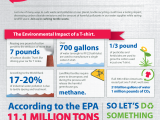 Cotton, the most common component of modern apparel, has been grown for thousands of years, dating back to the Indus River Valley in present-day Pakistan and possibly even earlier than that. As time passed and agricultural technology evolved, cotton remained as a staple crop and key fixture in the apparel industry. What changed was the method for growing it.
Cotton, the most common component of modern apparel, has been grown for thousands of years, dating back to the Indus River Valley in present-day Pakistan and possibly even earlier than that. As time passed and agricultural technology evolved, cotton remained as a staple crop and key fixture in the apparel industry. What changed was the method for growing it.
Cotton is currently one of the most chemical dependent crops in the world. It accounts for 10 percent of the world’s total agricultural chemicals and 25 percent of the world’s insecticides. Cotton production is also responsible for countless cases of pesticide poisoning and wildlife devastation, especially in developing nations where equipment is inadequate.
This barely begins to explain the environmental impact of mainstream cotton production. While chemically grown cotton is detrimental to the environment, responsibly grown, organic cotton is just as useful and wearable, with fewer environmental and health risks.
What is organic cotton?
Organic cotton, according to the Organic Trade Association, is cotton grown without the use of toxic pesticides or fertilizers. Instead of harsh chemicals, organic cotton uses mechanical or hand-weeding, crop rotation, the use mulches, beneficial insect releases and more.
Why go organic?
- It’s much safer for workers to handle cotton that’s nontoxic—especially in places where cotton is still handpicked.
- Mainstream cotton production often causes chemical runoff into water supplies. In 1995 in Alabama, contaminated runoff from cotton fields killed 240,000 fish.
- Organic cotton dyeing causes far less water pollution than chemically intensive dyeing, which is responsible for nearly 20 percent of the world’s industrial water pollution.
- Mainstream cotton uses an excessive amount of water—700 gallons of water for one t-shirt. Organic cotton still uses quite a bit, but typically, it’s less.
- According to some, organic cotton is softer and easier on the skin.
Currently, organic cotton is more expensive and less available than mainstream cotton, but that should be changing in the near future. As retailers like H&M and Nike move toward using organic cotton, the demand for growers will increase and the price will come down.
Supporting organic cotton is an important step toward reducing the environmental footprint of the apparel industry and becoming better environmental stewards as a society. The same goes for responsibly disposing of clothing when it’s no longer wanted or needed. To learn more about clothing recycling, read on the USAgain blog about where recycled clothing goes and the popularity of secondhand clothing.
Why would there be any significant difference in the amount of water used to grow organic cotton or regular cotton? I wouldn’t think that refraining from pesticide use would make the plant any less thirsty.
Hi Ryan. You’re correct - organic cotton does not inherently use less water than “regular” cotton. The reason most organic cotton consumes less water is that 75-85 percent of organic cotton is grown in a rainfed environment, meaning no water is drawn via irrigation to the cotton field. Of course, growing cotton without drawing water is only possible in ecosystems with sufficient rainfall to sustain cotton growth.
Learn more here: http://textileexchange.org/blog/organic-cotton-harvests-water-well-cotton